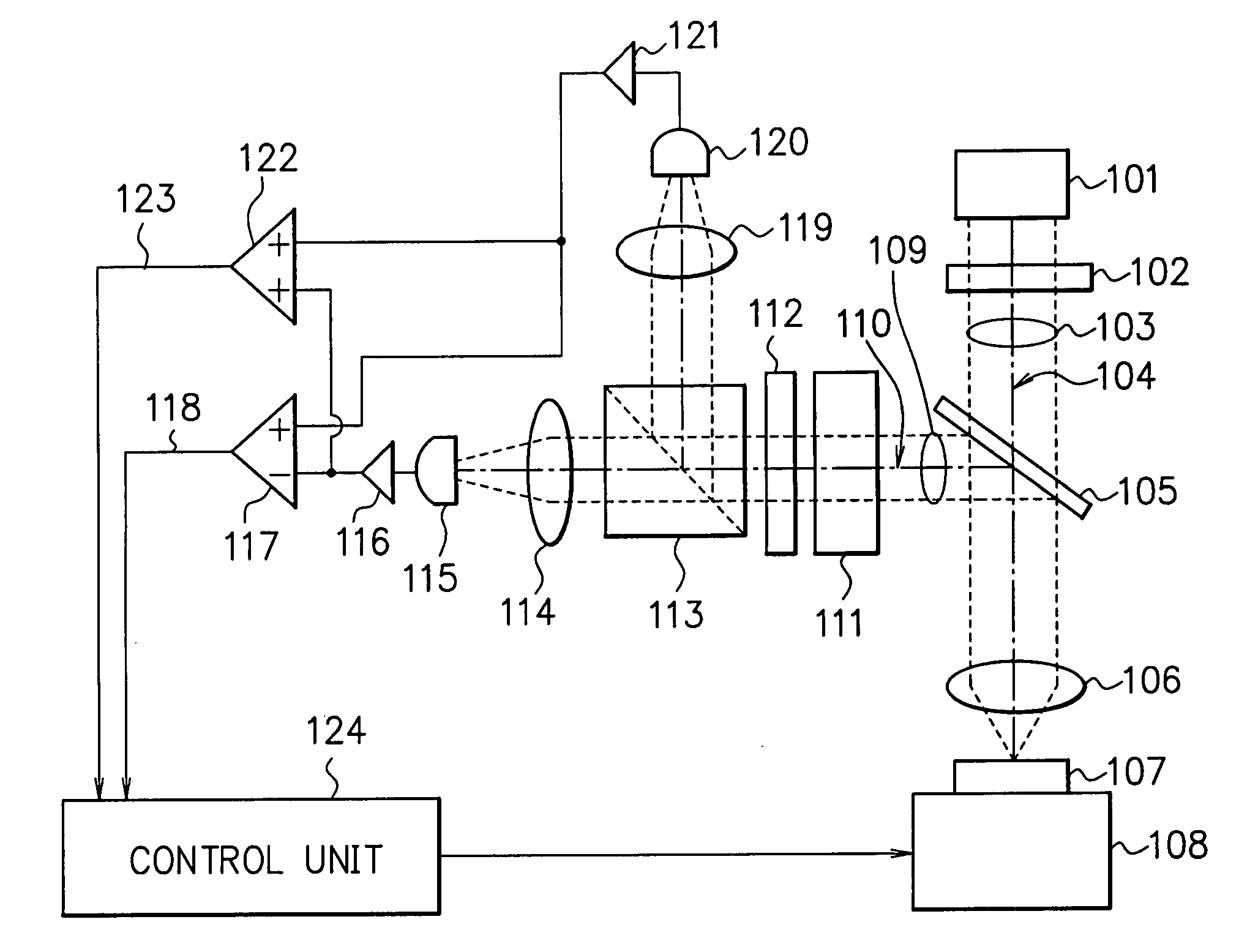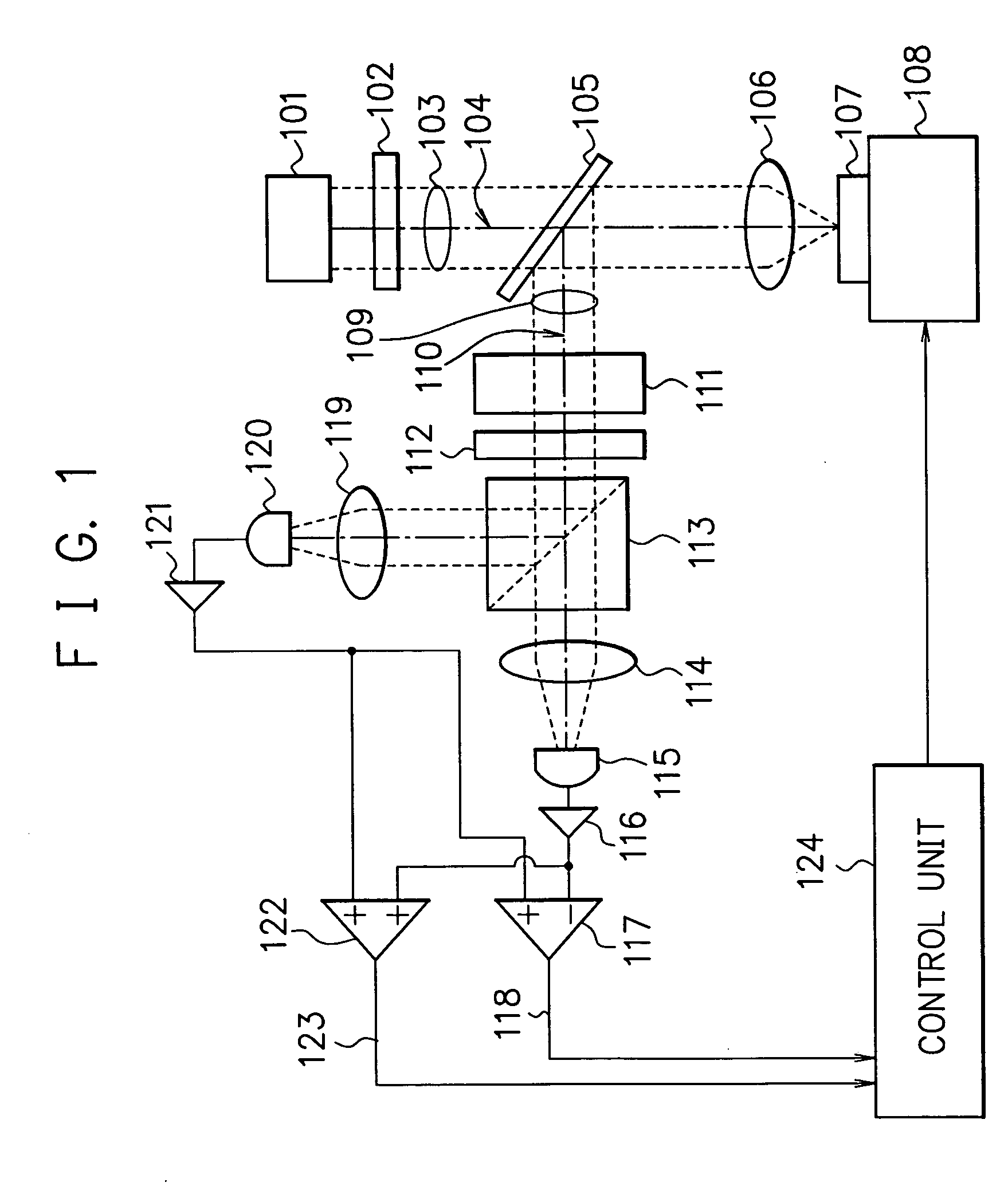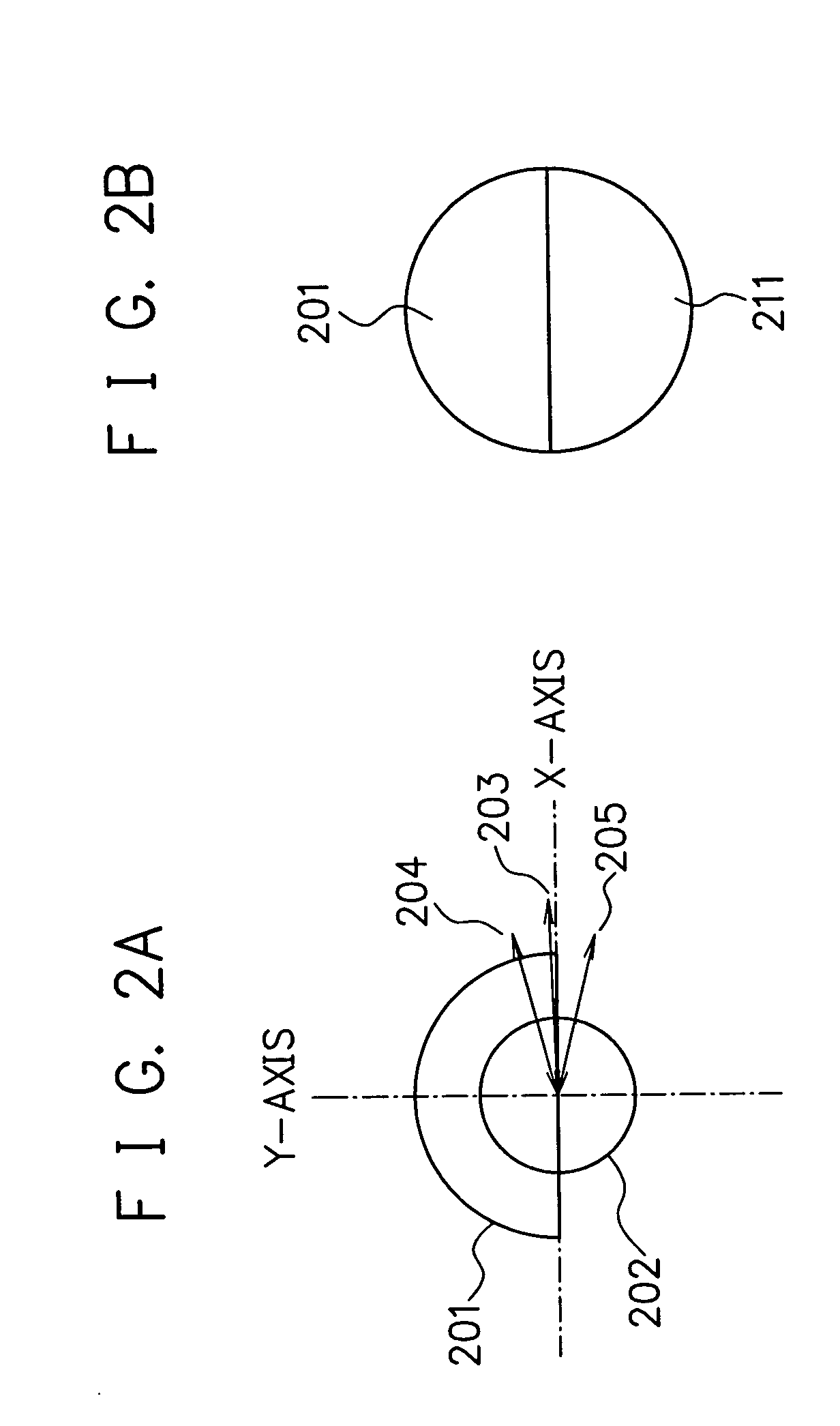Measuring device
a measuring device and a technology of a measuring device, applied in the direction of optical radiation measurement, instruments, magnetic property measurement, etc., can solve the problems of spatial resolution degrade spatial resolution degrade, etc., and achieve the effect of simple structure and high spatial resolution
- Summary
- Abstract
- Description
- Claims
- Application Information
AI Technical Summary
Benefits of technology
Problems solved by technology
Method used
Image
Examples
third embodiment
[0113]FIGS. 3A and 3B show examples of a divisional polarization rotation element as a typical example of the half-turn asymmetric polarizing element 111 (FIG. 1) according to a third embodiment of the present invention. The example of FIG. 3A shows a divisional optically active element 301 constituted of a semicircular optically active plate as the divisional polarization rotation element. The optically active element 301 can be made of optically active crystals such as quartz. This semicircular divisional optically active element 301 has action which gives +90-degree (π / 2 radian) rotation 303 to polarization of the passing light. It is supposed that the light source 101 outputs linearly polarized light and a cross section of a light beam 302 has a circular shape and intensity distribution axially symmetric with respect to the optical axis, but the intensity distribution may have an elliptic shape whose principal axes are in the X- and Y-axis directions. An upper half of the light ...
fourth embodiment
[0131]FIG. 4 shows an example of a divisional half-wave element as a typical example of the half-turn asymmetric reflectional symmetry polarizing element 111 (FIG. 1) according to a fourth embodiment of the present invention. In this example, an azimuth angle of a neutral axis 411 of an upper-half first divisional half-wave plate 401 is set to θ1=π / 8 radian, and an azimuth angle of a neutral axis 421 of a lower-half second divisional half-wave plate 402 is set to θ2=−π / 8 radian. The output light flux from the light source is the linearly polarized light and it has half-turn symmetry nature around the optical axis of the optical system and reflectional symmetry nature with respect to a plane including the optical axis and a polarization azimuth. The polarization azimuth is defined as the X-axis and a polarization azimuth angle incident on the divisional half-wave plates in a state in which there is no Kerr effect is defined as 0 radian.
[0132] It is supposed that the polarization spl...
fifth embodiment
[0153]FIG. 5 shows an example of a divisional ¼ wave element as a typical example of the half-turn asymmetric reflectional symmetry polarizing element 111 (FIG. 1) according to a fifth embodiment of the present invention. In this example, an azimuth angle of a neutral axis (either a slow axis or a fast axis) 511 of an upper-half first divisional quarter-wave plate 501 is θ1=π / 4 radian, and an azimuth angle of a neutral axis 521 of a lower-half second divisional quarter-wave plate 502 is θ2=−π / 4 radian. A polarization azimuth angle of the linearly polarized light incident on the divisional quarter-wave plates 501, 502 in the state without the Kerr effect is 0 radian.
[0154] Differential polarization is detected by setting the polarization split direction of the polarization split detector to the X- and the Y-axis direction. When the case where the linearly polarized light received the Kerr rotation of +δ radian is incident is considered, the light passed through the first and second ...
PUM
| Property | Measurement | Unit |
|---|---|---|
| angles | aaaaa | aaaaa |
| angles | aaaaa | aaaaa |
| azimuth angle | aaaaa | aaaaa |
Abstract
Description
Claims
Application Information
 Login to View More
Login to View More - R&D
- Intellectual Property
- Life Sciences
- Materials
- Tech Scout
- Unparalleled Data Quality
- Higher Quality Content
- 60% Fewer Hallucinations
Browse by: Latest US Patents, China's latest patents, Technical Efficacy Thesaurus, Application Domain, Technology Topic, Popular Technical Reports.
© 2025 PatSnap. All rights reserved.Legal|Privacy policy|Modern Slavery Act Transparency Statement|Sitemap|About US| Contact US: help@patsnap.com



